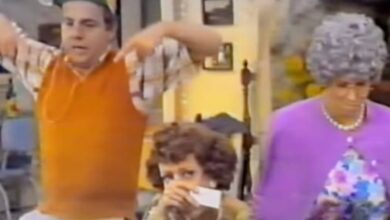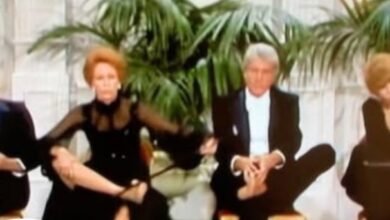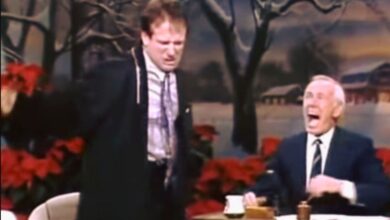Kitty Wells Gave an Unforgettable and Emotionally Timeless Rendition of “Making Believe”
In the spring of 1955, Kitty Wells delivered one of her most hauntingly beautiful recordings with “Making Believe,” a sorrowful ballad that struck a powerful chord with country audiences. Written by Jimmy Work, the song speaks to the deep ache of unreturned love—of continuing to love someone who’s moved on, while trying to hide the pain. Wells’ poignant interpretation brought a raw vulnerability that resonated instantly, earning the song an enduring place in the annals of classic country music.
Born Muriel Ellen Deason in Nashville, Tennessee, Kitty Wells began singing gospel music as a young girl and later performed with her husband, Johnnie Wright, in traveling shows and musical groups. It was in 1943 that she adopted the stage name “Kitty Wells,” borrowed from a traditional folk ballad. She would go on to change the landscape of country music in 1952 with “It Wasn’t God Who Made Honky Tonk Angels,” the first major hit by a solo female country artist—a song that challenged prevailing gender roles in the genre and paved the way for countless women to follow.
Though “Making Believe” was originally recorded by its writer, Jimmy Work, Wells’ version quickly eclipsed the original in popularity. Her rendition reached No. 2 on the country charts, where it held its position for an extraordinary 15 weeks. Its path to the top was blocked only by Webb Pierce’s “In the Jailhouse Now,” which dominated the No. 1 spot for 21 weeks. Despite that, Wells’ version of “Making Believe” became one of the longest-running hits on the charts for a female country artist at the time.
The lyrics unfold like pages from a heartbroken diary, capturing the torment of pretending life is fine when it’s anything but. Phrases like “I’ll spend my lifetime loving you and making believe” speak directly to those who’ve loved in silence. Kitty’s voice, full of trembling restraint and quiet desperation, transformed those words into something deeply human. Her delivery made the pain tangible, and the song’s simplicity only amplified its emotional weight.
With the release of “Making Believe,” Wells solidified her place not just as a trailblazer but as a masterful interpreter of sorrowful ballads. Coming off the heels of her groundbreaking “Honky Tonk Angels,” she continued to prove that women could not only compete with male performers but shape the genre’s emotional core. Her success broke open doors in an industry where female voices had often been relegated to the background.
What makes “Making Believe” truly timeless is how it transcended its own era. Over the decades, artists from across genres have reinterpreted the track, each paying homage to its melancholy message. Emmylou Harris brought her ethereal vocal touch to it in the ’70s, while Johnny Cash and Ray Charles each lent their unique phrasing to give the song new texture and color. Despite these reinterpretations, Wells’ original still stands as the definitive version.
In the broader scope of the country tradition, “Making Believe” embodies what makes the genre so beloved: emotional storytelling told with lyrical honesty. Wells used no flashy vocal acrobatics—just a steady, aching voice that carried the full weight of heartbreak. It’s this sincerity that continues to captivate listeners and earns the song a place among country’s most cherished compositions.
As her career continued, Wells maintained her gift for capturing the heart of a song. Other hits like “Release Me,” “Amigo’s Guitar,” and “I Can’t Stop Loving You” reinforced her legacy as one of country’s most evocative vocalists. She was honored many times throughout her life, most notably being inducted into the Country Music Hall of Fame in 1976, cementing her role as a foundational figure in the genre.
“Making Believe” has endured far beyond its original release. It has been used in films, television, and even modern advertisements—testament to its emotional staying power. Each new placement introduces it to fresh ears, allowing new generations to experience the heartbreak and humanity that Kitty Wells brought to every line.
The song’s relevance remains as powerful today as it was nearly 70 years ago. Its themes are universal, and its delicate performance by Wells continues to inspire artists seeking to connect deeply with their audiences. Whether played in the quiet solitude of a late-night drive or on the stage of the Grand Ole Opry, the song still moves listeners to reflect on their own stories of love and loss.
Kitty Wells’ rendition of “Making Believe” is more than a hit from 1955—it’s a cornerstone of country music storytelling. Its lasting influence can be felt in the work of modern artists who prioritize emotion and authenticity. As long as songs of heartbreak continue to be sung, Wells’ voice will echo in the background, reminding us all of the beauty and pain of making believe.





